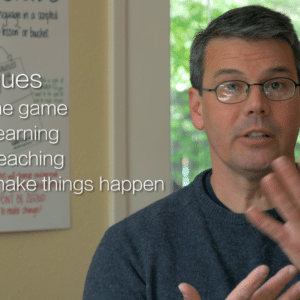
You’re “setting-up” a “TPR” environment, as close as possible to the real life objects and situation involved in your target skill. Yet starting with the real life, fully complex situation will overwhelm you and your players, so you “Limit” the scope of the environment and play to your current ability.
The cost of information is attention.
There is a biological limit to what we can pay attention to. This is forumulated in different ways for different contexts. Whether the 7 +/-2 chunks of information we can hold in our working memory (as proposed by cognitive psychologist George Miller in 1956), the approximately ≤ 150 intimate social relationships we can maintain (aka “Dunbar’s Number”, proposed by British anthropologist Robin Dunbar), or other such observed constraints to human performance, the fundamental point is clear: there is a finite amount of human attention in any situation.
You can overeat on food, and you can over-consume information. In both cases your body and mind begins to slow down as you approach your absolute limit. The goal is to stay some distance from your limit, remaining light, fluent, and agile, rather than becoming heavy and sluggish.
Regardless of any specific statistic or quantified constraint on human attention, the fundamental guideline in WAYK is to watch the players right here, right now, in this environment, and find the edge of their functional attention. What is slowing them down? What is too much to keep track of?
We count every coin in this constrained piggy bank of human attention and make the most of each one. None are taken for granted, most especially the pennies.
Multitasking (the simultaneous performance of activities that require conscious attention) degrades the overall performance of the multitasker – several things done poorly is usually a bad exchange for one thing done well.
There’s an underlying issue that’s easy to miss; by engaging one focus at a time until you acquire unconscious competence, you’re actually gaining the ability to do many things at once without dividing your attention. In order to give a memorized speech while juggling and tap dancing, each one of those activities must be effortless and require no conscious maintenance.
Limiting your focus in the short-term creates expanded capacity in the long-term.
Introducing the technique
Short: “This is technique “Limit”. We always Limit” whatever we’re doing to what we can currently handle.”
Long: “We “limit” the scope of the conversation, the number of objects in play, and the length of time we spend playing.”
Applying the technique to language acquisition
There are many dimensions in which to apply limit. Anything that takes attention and energy can be limited.
- Limit the number of objects in the conversational play to 5, 3, or even just one.
- Look at your set-up with tq WAYK Eye – is the table surface dirty, or does it have a distracting pattern? Clean it or limit it with a neutral colored table cloth.
- When players want to use their new-found fluency to expand the scope of conversation beyond their fluency, invoke limit to keep the game flowing.
- Limit the number of players, the environment, or the number of techniques you wield, to stay within your fluency as a game leader. Use limit to manage your own ability to transmit language too.
But what about…?
Students used to classroom language learning may worry that “Limit” will cause them to be bored by play, or even if they enjoy themselves they may worry that it will take a long time to advance in proficiency.
- TQ Fluency demonstrates that we are only fluent if we can do it, with ease and comfort. Knowledge is not a substitute for fluency.
- TQ Travels with Charlie is the fastest route through a language – and the scale in american college and universities for your language proficiency level.
- By tq Fluency Hunting, we’re not just learning a skill, we’re learning to learn and teach any skill as rapidly as possible.
- The experience of gaining fluency through play is an immersive experience – tq Everybody Plays All-the-time is an effective antidote for boredom.





